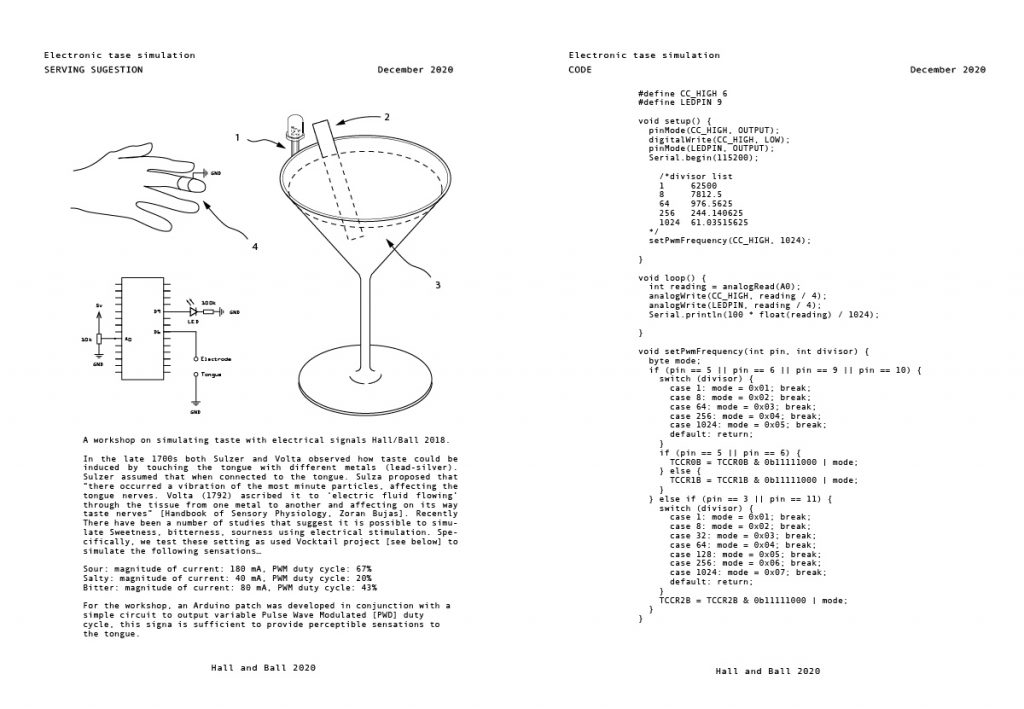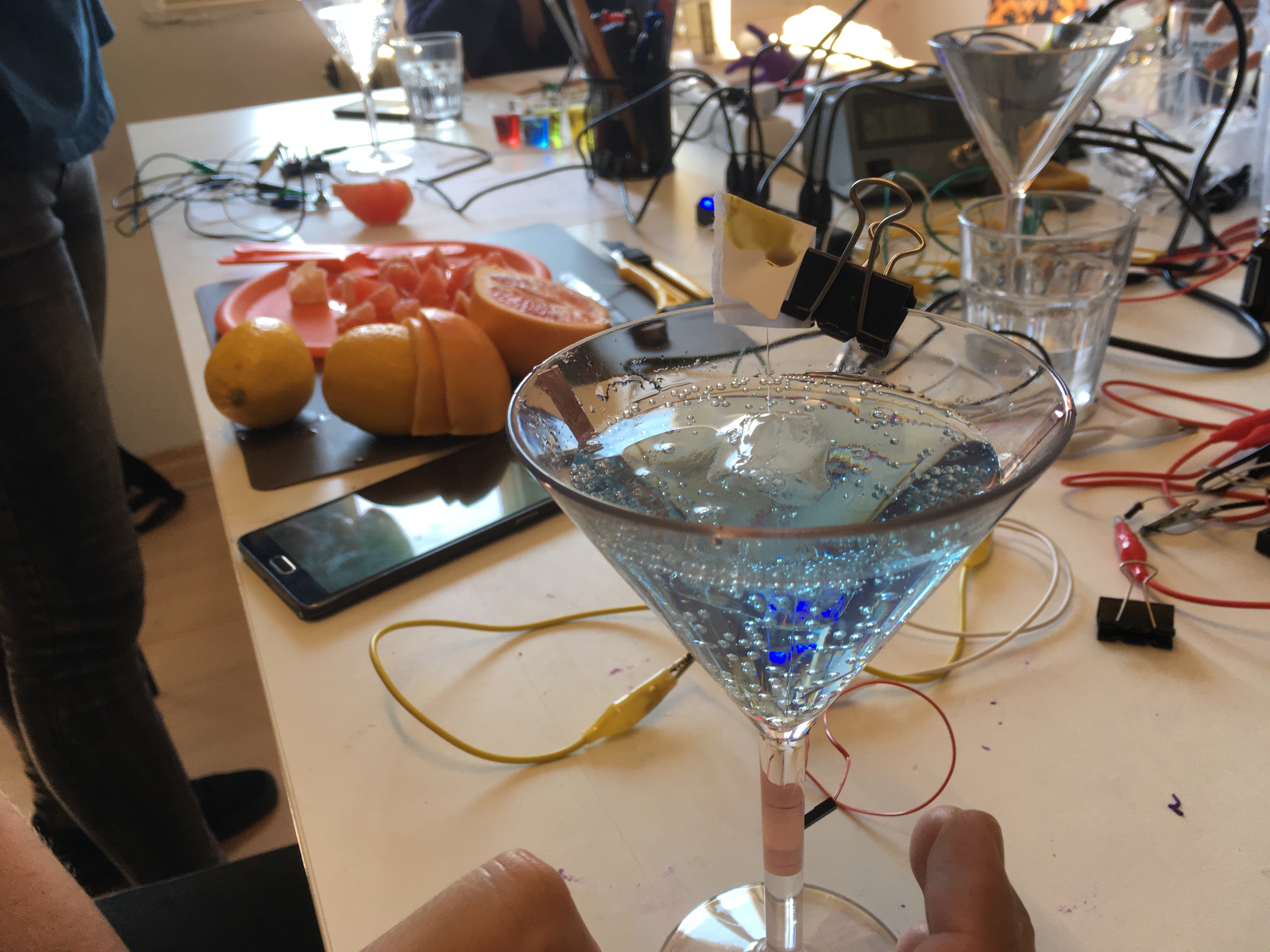
This workshop is based on recent studies that suggest it is possible to electronically simulate different taste sensations. For this workshop, an Arduino is used to output an electrical signal*, which can create perceptible taste sensations on the tongue. Specifically, in the workshop, we test these settings:
to simulate the following sensations…
Sour: magnitude of current: 180 mA, PWM duty cycle: 67%
Salty: magnitude of current: 40 mA, PWM duty cycle: 20%
Bitter: magnitude of current: 80 mA, PWM duty cycle: 43%
*Variable Pulse Wave Modulated [PWD]
Materials:
Arduino, electrical cables,
prototyping board cocktail glass [or other receptacles] 4mm copper tape, Water,
Various foodstuffs.
Instruction:
The diagram (above) gives an outline of the electronic circuit required to create an electronic taste perception experiment in conjunction with the Arduino code. The circuit is created through the body via a fingertip and another electrode which is placed inside the glass, the circuit completed when the drink enters the mouth. The potentiometer adjusts the frequency of the signal which in theory can then simulate different kinds of taste.
Experiment with different liquids and food types to see how the electrical signal augments different flavours. Note that foodstuffs with high moisture content are more effective such as a cucumber. The circuit could be easily modified to include an LED or a sound element Which could be used to add optical or sonic stimulation.
Audience:
If not participating, the audience should experience this workshop on an
incidental basis or via our window into the space.
Documentation:
Make photographs and video of the experiment. Discus experience and create a name for new electronically augmented cocktails. These materials and subsequent document inform any subsequent workshop.

The Workshop as Art
PhD Exhibition instructions: Roll over the gallery plan above and click on the links; this will take you through a series of pages that constitutes the online exhibition, each page contains this same gallery plan. If you get lost in the blog, you can return to the exhibition via the ‘PHD EXHIBITION’ link in the main menu at the top of the page. [ See the exhibition press release here >>>]